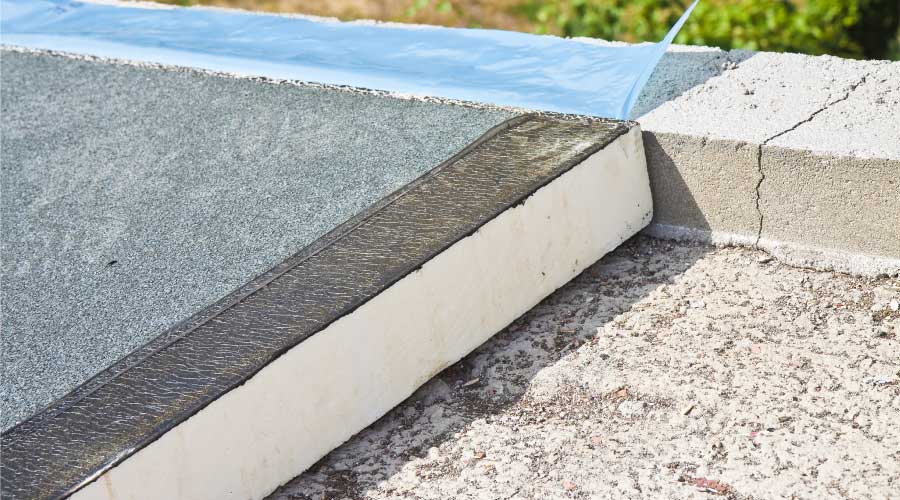New Energy Code Could Trim Costs
Building on improved technology and changing energy economics, the updated version of ASHRAE 90.1 sets a cost-effective benchmark for HVAC and lighting design.
As the cost of energy rises and the cost of energy-saving devices gradually fall, energy codes try to keep pace by continuously tightening the noose on energy waste. While it won’t work its way into building codes for at least several years, ASHRAE 90.1-2004 guides engineers and facility executives toward specifying a higher — but easily attainable — level of energy efficiency.
As the latest version of ASHRAE’s ever-evolving energy code, ASHRAE 90.1-2004 incorporates all the upgrades, which ASHRAE calls addenda, made since publication of ASHRAE 90.1-2001. The latter has become the basis for some state energy codes governing the design of new buildings and major renovations.
Under a federal law, the 2001 version will likely set the bar for state building codes starting in 2006, but it has already become somewhat dated by improvements to energy equipment and building specifications. Those seeking the latest in energy standards should look to ASHRAE 90.1-2004 as the next step toward efficiency.
Written to allow easy incorporation into specifications for new buildings and renovations, 90.1-2004 lays out minimum requirements for a building’s envelope, electrical power systems and equipment, lighting, heating, ventilating and air conditioning, service, water heating, and energy management.
Under the 1992 federal Energy Policy Act (EPAct), ASHRAE 90.1 was mandated as the basis for all state building codes as they affect energy use, starting with ASHRAE 90.1-1989. Under EPAct, the 1999 version became law in July 2004, but has yet to be adopted by all states. Since the 1999 version was somewhat dated by the time it became a requirement, some states, especially those having high energy prices, have already updated their building codes to the 2001 version. Some states and cities, such as Phoenix, are now going further by leapfrogging the 2001 edition and enacting part or all of the 2004 edition instead.
For engineering firms and facility executives handling facilities in many states, the result has occasionally been confusion as base buildings and system designs needed to be altered to meet differing levels of efficiency. The complexity and wording of past versions of 90.1 have sometimes led building practitioners to complain, resulting in efforts to simplify the standards via addenda.
Among the changes seen in ASHRAE 90.1-2004 are many clarifications of requirements as well as a major reformatting of the text and a more consistent numbering scheme. One improvement has been a reduction in the number of climate zones (which affect choices of equipment) from 26 to eight. Those zones are now specified by county boundaries, eliminating difficulty where previous zone boundaries cut across political jurisdictions. This reduction also reduced the number and complexity of tables in the standard.
The new standard lowers lighting densities to reflect improvements in lighting systems and controls.
HVAC Addenda
• The revised standard also tightens HVAC rules.
• To keep pace with the cost reductions and easier installation for variable speed drives, 90.1-2004 now requires variable air volume capabilities for fans as small as 15 horsepower The prior version had a cutoff level of 30 horsepower.
• Requirements for off-hour controls for HVAC systems have been broadened. Any system greater than 15,000 British thermal units per hour must have such controls. That’s a major drop from the 2001 version which called for off-hour controls for units greater than 65,000 Btu per hour. Some exceptions apply to 24/7 systems and for hotel guest rooms.
• Fan motors larger than 3⁄4 horsepower must have automatic shutoff controls, unless 24/7 service is intended.
• Such automatic shutoff controls may now respond to dewpoint and dry-bulb temperature as well as other criteria, such as time of day. High-limit values are specified for that form of control.
• While duct tape was previously banned as a primary duct sealant, some new types of sealing tapes are now allowed to seal air ducts.
• To reflect new Department of Energy standards for small air-conditioning units and heat pumps, efficiency levels for such appliances have been raised.
• The efficiency of heat pumps used for heating swimming pools is now covered along with other forms of pool heating.
A variety of small changes are made to include models and types of HVAC systems and certain cooling towers previously not covered, for example. The 2004 code also alters, removes, or clarifies numerous exceptions found in the 2001 version and not covered in the above examples. Unlike earlier versions, however, 90.1-2004 does not show any significant changes to building envelope requirements.
Of special interest to architects and lighting designers is the across-the-board reduction in lighting power density. (See chart). As technology for energy-efficient lighting has continued to advance, these densities have been gradually lowered to reflect the improving capabilities of lighting and lighting controls. ASHRAE 90.1-2004 cuts lighting power densities by about 25 percent compared to present law ASHRAE 90.1-1999.
Lighting is also affected in several other ways:
• Exit sign wattage cannot exceed 5 watts per face, which essentially means LED-based signs must be used.
• More spaces will need lighting controls including occupancy sensors and timers.
• Task lighting is now covered in lighting power densities, though a separate allowance is provided beyond the lighting power densities for built-in lighting.
• Exterior lighting receives much more attention, with lighting power densities established for a variety of cases, and new limits on exceptions to the rules. Previous codes had established the efficacy (lumens per watt) but not an allowable watts per square foot. Many of these changes were in response to comments regarding deficiencies of the exterior lighting requirements in the 2001 revision. The new rules cover exterior lighting for parking areas, walkways, plazas, building entries, canopies, façade lighting and outdoor sales areas.
Several methods exist to determine overall compliance with ASHRAE energy codes, one being the energy cost budget (ECB) method. To make that process easier, the 2004 version provides a reformatted table showing the symmetry between simulations of a design building model and a budget building model using the ECB method.
Why bother with 2004?
Before recommending higher efficiency levels, ASHRAE committees review the cost effectiveness of proposed changes. No change is accepted unless it meets tests for acceptable rates of return at average national energy costs. By the time such reviews have been completed, often a year or two, payback periods have often become even better. Facility executives should consider 90.1-2004 to be a good benchmark for the efficiency of systems to be installed in new buildings and major renovations.
Early Adoption?
While the 2004 version will not likely become a required basis for state codes until 2008, several benefits may occur from its earlier acceptance. An analysis by the State of Florida found that the new code is 5 percent to 15 percent more stringent than the 1999 version presently in force. Adopting it could save Florida firms $21 million a year in energy costs. As energy prices continue to rise, that figure may increase over time. As a result, Florida is considering early adoption of the 2004 version as another way to help its economy.
As has occurred with the 2001 version, which is not yet required under EPAct, it is likely that other states, especially those with high energy costs, will be looking at the 2004 version for ways to upgrade building codes. It may therefore make sense for new buildings or major renovations now on the drawing board to meet that standard to avoid later costly changes.
Lindsay Audin is president of EnergyWiz, an energy consulting firm based in Croton, N.Y. He is a contributing editor for Building Operating Management.
The ASHRAE Standard-Setting Process
Among the many ASHRAE standards governing such issues as fresh air requirements and energy management systems, Standard 90.1 is reserved for energy conservation. First published in 1975, it has seen revised editions in 1980, 1989 and 1999 using a “periodic maintenance procedure” that involves constant peer review and public input.
To keep pace with rapidly advancing energy technologies, the ASHRAE board of directors voted in 1999 to place the standard on continuous maintenance so it would be updated several times a year via addenda. Starting with the 2001 edition, ASHRAE 90.1 is now published in its entirety in the fall of every third year. Publication is timed to allow inclusion of revised versions in state and city building codes so that the standards eventually becomes law.
|
For More Information
A full copy of ASHRAE 90.1-2004, either electronic or print, is available. Cost to non-members is $110. A full set of the addenda to the 2001 edition, which cover the most substantial changes, may be found for free at www.ashrae.org/template/AssetDetail/assetid/30208 or by clicking on the Standard Addenda shortcut found just below the search field.
For a discussion of how the 2001 version varied from the 1999 version (which is the basis of many state building codes), see an article covering those issues in the July 2004 edition of Building Operating Management.
The U.S. Green Buildings Council will be referencing ASHRAE 90.1-2004 as the standard to beat in its next version of LEED-NC — Version 2.2. More LEED points are awarded for higher energy efficiency and the new standard contains guidance for those interested in achieving LEED certification.
|
More information on energy codes
To track which states are keeping pace with the various versions of the ASHRAE code, several DOE-sponsored Web sites are available:
|
Related Topics:











